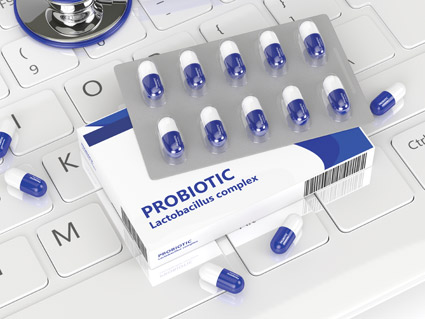
By Jonathan Evans
Herbal Information Specialist for the Herbarium
Good bacteria or bad bacteria – that is the question.
Probiotics have been increasingly in the news recently, and there are several conflicting stories and points of view regarding the need for added gut flora. A study from a prestigious college pooh-poohed the effectiveness of taking a probiotic supplement, while some 10,000 scientific articles calling attention to having healthy gut flora have been published since the year 2000.
Which one do you think people paid attention to? Adding to the confusion are the discussions of probiotic, prebiotic, synbiotics, postbiotics and psychobiotics.
Whew!
What’s with those ‘biotics’
I won’t spend a lot of time on these categories, but will simply offer a primer on these supplements for the curious:
Why you may need them
Would you believe our gut flora outnumbers our body’s cells by 10 to 1 and our collective microbial genome outnumbers the human genome by 100 to1?
With those kinds of numbers is it really that important to take a supplement?
The simple answer is yes, for a variety of reasons.
Researchers know that taking an antibiotic can permanently damage your gut’s microflora, and can cause some harmful bacteria to become resistant to treatment.
Think of the many times you have been prescribed antibiotics and how your digestive system was affected, and think about how it is working now.
Your good flora is destroyed by medicines, both prescription and over the counter, and by diet, and chronic illness.
Granted, with the billions and billions of bacteria that inhabit your digestive system you may not notice much of a change. However, healthy gut flora is essential for the normal development and working of your immune system. Gut flora makes up 70 to 90 percent of your immune system. Auto-immune diseases have a direct link to a lack or imbalance of gut flora.
Have you been feeling run down, seem to be catching more colds than usual, or just feeling not quite right? Could be a gut flora issue. Did you know chronic depression, anxiety, IBS, Crohn’s, Leaky Gut hyperactivity, ADHD and OCD have been linked to gut flora imbalance? And, gut flora is also necessary for normal central nervous system growth and neurotransmitter functions.
What to look for
If you are going to use a probiotic, it is important to look for some basics.
The product should contain a mixture of lactobacillus species and bifidobacterium.
Lactobacillus species produce enzymes that digest and metabolize proteins and carbohydrates, help make vitamin K, and the B vitamins, break down bile salts and inhibit inflammatory mediators. They also help to fight against pathogens.
Bifidobacterium constitute 95 percent of your gut bacteria. Bifidobacteria metabolize lactose, generate lactic acid, synthesize B vitamins, help ferment and digest carbs, make fatty acids and so much more.
The strains should be listed on the label, and in the amounts of billions. For general use a probiotic should have anywhere from 10-20 billion microorganisms. For people who are using over the counter or prescription medications, a good number would be 30 to 50 billion, and if you have been on antibiotics, 50 to 200 billion is not out of the question.
For those using antibiotics and trying to reestablish some balance of flora, try to take your probiotic about 2 hours after your prescription. This gives you a chance to repopulate some bacteria to help with balancing your digestive system. At the last dose of your antibiotic, give it two hours and then use a stronger potency flora to get you back to normal as quickly as possible and avoid things like candida overgrowth.
Try to use only refrigerated probiotics. Heat and humidity adversely affects the bacteria. Most formulas have a die off of billions within 60 days of manufacture but there are still enough to help colonize. Your probiotic should be refrigerated at the time of purchase and stored in the fridge at home. There are many companies that claim to have room stable products and they are – to a point. I know of only one company that has a room-stable product that actually holds up. During the summer months I tend to favor one company because of their shipping methods. Even though the companies say their product can stand 70 plus degrees for several days, I know the delivery trucks can get very warm and I just do not trust that the bacteria can survive. It’s my bugaboo, but it is also a way to insure my customers get what they pay for.
While we are on the subject, eating yogurt does not really help all that much. Despite what Jamie Lee Curtis says, yogurt is pasteurized – which extends shelf life – but destroys some of the bacteria and only contains one of two strains of bacteria. Many yogurts also contain some form of sugar – which also defeats the purpose – and can add fuel to the overgrowth of candida. Eat yogurt if you enjoy it, just don’t expect it to work miracles.
I hope this explanation helps in your search for a good probiotic!
— Jonathan
Send questions on botanical remedies to: Natures Rx: Jonathan Evans at herbarium258@gmail.com, or by regular mail to: The Herbarium, 264 Exchange St., Chicopee, MA 01013. If requesting additional info, include a self-addressed stamped envelope.